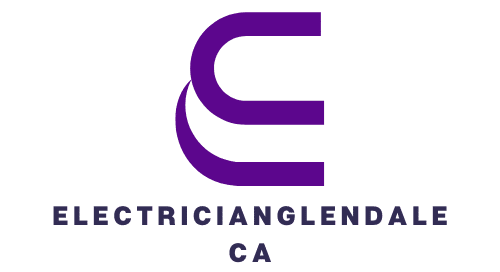How Can Real Estate Professionals Utilize 360-Degree Photography for Virtual Tours?

In the dynamic and ever-evolving world of real estate, having an edge over competitors can make all the difference. The advent of 360-degree photography has opened up new horizons for the industry, specifically in the creation of engaging and immersive virtual property tours. As professionals tasked with marketing properties, your collective aim is to offer potential buyers an unmatched experience that will inspire them to invest. This article delves into how you can leverage 360-degree photography to create compelling virtual tours that will not only help you showcase properties in a unique way but also attract more potential buyers.
Understanding the Power of 360-Degree Photography
Before embarking on the journey of utilizing 360-degree photography for your virtual tours, it’s crucial to fully comprehend its potential and capabilities. Unlike traditional photography, 360-degree photos provide a fully immersive experience for viewers. They create a spherical view of the environment, allowing potential buyers to explore the property as if they were actually there.
A découvrir également : What Are the Trends and Challenges in Developing Floating Homes in the UK?
360-degree photography is not just about snapping regular photos in a panoramic mode. It’s about creating interactive images that users can rotate and explore from every angle. The viewers can move the image up, down, left or right, thus providing a comprehensive view of the property. This technology will enable you to present a realistic and complete image of the property, which conventional photos often fail to deliver.
Investing in the Right Equipment for 360-Degree Photography
Quality is paramount when it comes to creating impressive virtual tours. Low-quality images can deter potential buyers, regardless of how excellent the property may be. Therefore, investing in the right equipment for 360-degree photography is crucial.
Dans le meme genre : What Are the Implications of Urban Vertical Farming for Real Estate Developers?
There are several cameras available in the market that can capture 360-degree photos. Some popular ones include the Ricoh Theta series, the Insta360 series, and the GoPro Fusion. These cameras capture a full 360-degree view in a single shot, making image stitching unnecessary. It will save you time and also ensure the high quality of photos.
In addition to the camera, it’s also essential to have a reliable tripod that will hold the camera steady during image capture. A shaky camera can lead to blurry images which won’t provide the immersive and professional experience you’re aiming to create.
Creating the Virtual Tour with 360-Degree Photography
Once you have the equipment ready, you can start creating your virtual tour. The process begins with capturing 360-degree photos of the property. You need to take shots of every room and area that you wish to include in the tour. A good practice is to plan your shots beforehand to ensure you cover all the essential areas.
After capturing the photos, the next step is to compile them into a virtual tour. There are several software applications available that can help you achieve this. These tools allow you to add hotspots to the photos, which are interactive points that viewers can click to move to another room or view.
Creating a virtual tour is not just about stitching together photos. It’s about laying out a path that the viewer will follow. The tour should be logical and intuitive, giving the prospective buyer a smooth and comprehensive tour of the property.
Marketing Your Properties with Virtual Tours
With your virtual tour ready, the next step is to market it to potential buyers. Virtual tours can be embedded on your website, shared on social media platforms, or sent to potential buyers via email.
When marketing your virtual tours, it’s essential to highlight the immersive experience they provide. Unlike traditional property photos, virtual tours give potential buyers a more realistic and holistic view of the property. They can explore each room, look around, and get a feel for the space.
Virtual tours are especially useful in times when physical property viewing is not possible, such as during a pandemic or for long-distance buyers. They allow potential buyers to visit properties virtually, thus expanding your reach beyond geographical boundaries.
Staying Ahead of the Competition with Virtual Tours
In the highly competitive real estate industry, staying ahead of the competition is key. Virtual tours powered by 360-degree photography offer a unique and innovative way to showcase properties. They not only provide a holistic view of the property but also deliver an engaging and immersive experience to potential buyers.
These tours can help you attract more potential buyers, generate more leads, and ultimately seal more deals. They are a powerful marketing tool that can elevate your property presentations to a whole new level. So, make the most of this technology to stand out in the market and impress potential buyers with immersive virtual tours.
Remember, the ultimate goal of using 360-degree photography for your virtual tours is to create an experience that will help potential buyers visualize themselves in the property. It’s about bringing properties to life and making them virtually tangible, which can be a strong motivator for potential buyers to take the next step.
Enhancing the Buyer’s Experience with High-Quality Virtual Tours
As a realtor, your primary goal is to craft an unforgettable experience that tempts potential buyers enough to make an investment. The power of 360-degree photography and virtual tours in real estate marketing lies in their ability to do just that, by offering an immersive and engaging visual experience.
Virtual tours give potential buyers the opportunity to explore the property at their own pace, enabling them to focus on details that matter most to them. It’s almost like having a private viewing, except it can be done anytime and from anywhere. This is especially beneficial for those who may not be able to physically visit the property due to geographical constraints or pandemic restrictions.
High-quality virtual tours can also provide potential buyers with a more accurate understanding of the property layout. Traditional photography can sometimes distort the perception of space, but 360-degree photography eliminates that problem. By using this technology, you can provide a true-to-life representation of the property, with a clear view of floor plans and how spaces interconnect.
Moreover, virtual tours can significantly speed up the decision-making process. They offer an in-depth view of the property, allowing potential buyers to visualize themselves in that space. This can inspire confidence in their decision and prompt them to take action faster.
Lastly, virtual tours can also be a great tool to reengage potential buyers who may have previously shown interest in the property. A well-crafted virtual tour can reignite their interest and potentially result in a closed deal.
Conclusion: Embrace the Future of Real Estate Marketing with Virtual Tours
The real estate industry is no stranger to evolution and innovation. As an estate agent, leveraging technology like 360-degree photography to create virtual tours is a strategic move that can place you ahead in the competitive real estate market.
Virtual tours not only offer potential buyers a more interactive and engaging property viewing experience, but they also allow estate agents to showcase properties in their best light. With the capability to highlight unique features, provide clear floor plans, and offer a realistic feel of the space, virtual tours can be a highly effective tool in your real estate marketing arsenal.
In a world where everything is rapidly shifting online, the use of virtual tours can significantly expand your reach, attracting both buyers and sellers from all over the globe. Whether it’s a local buyer who prefers the convenience of online browsing, or an overseas investor looking for properties, virtual tours can cater to a wide audience.
Therefore, embracing this technology not only benefits potential buyers, but it also adds significant value to estate agents. It’s a win-win situation that can lead to increased leads, more closed deals, and a stronger reputation in the real estate market.
So, step into the future of real estate marketing, and let 360-degree photography and virtual tours take your property presentations to a whole new level. After all, in the high-stakes world of real estate, it’s all about delivering the best buyer experience, and virtual tours are certainly an effective way to achieve that.
